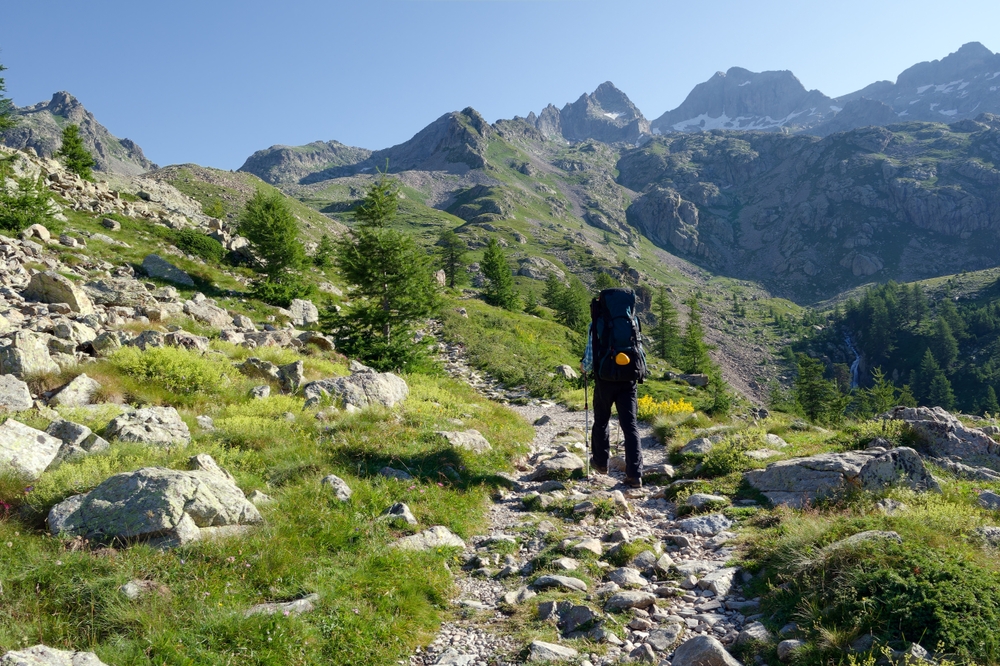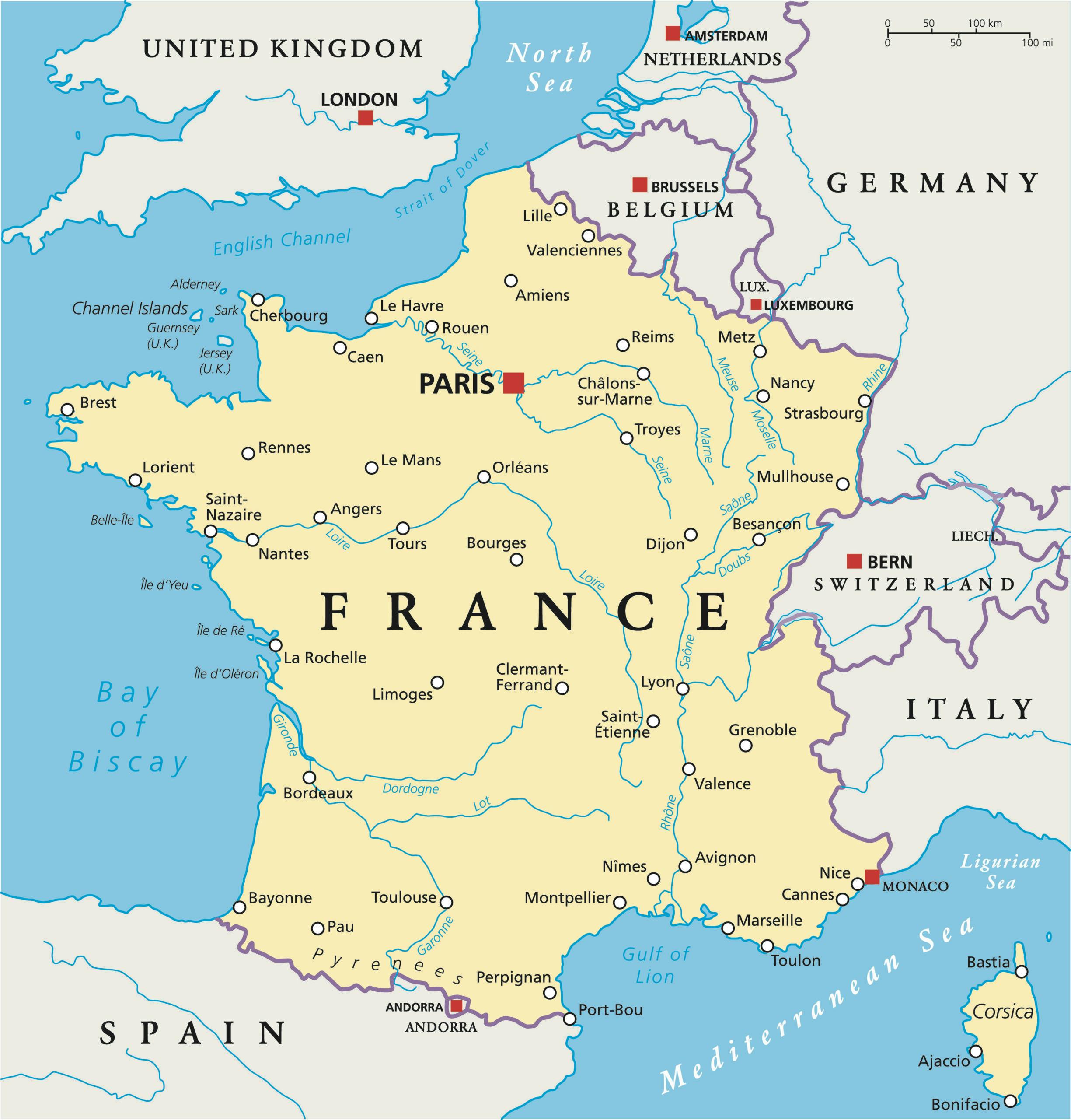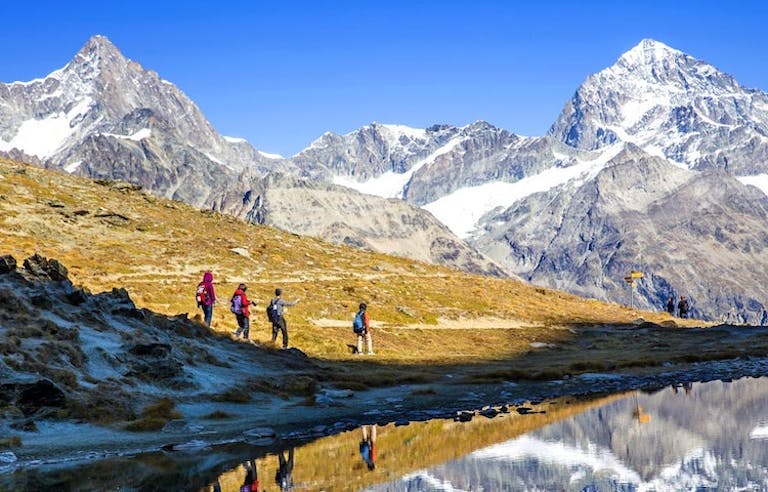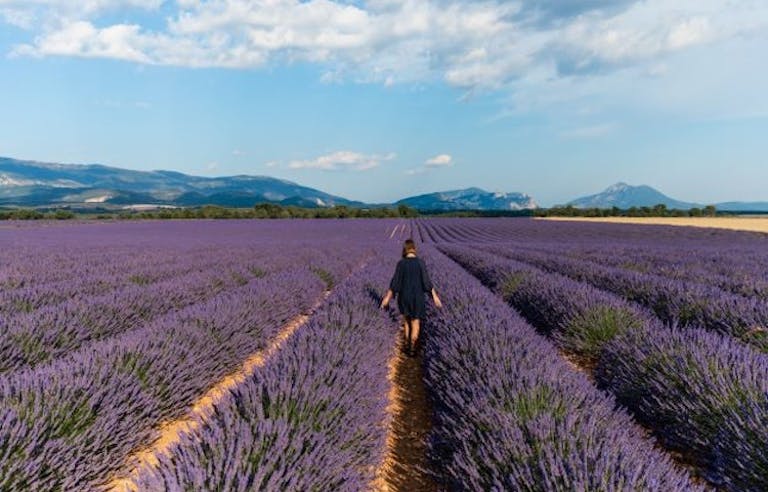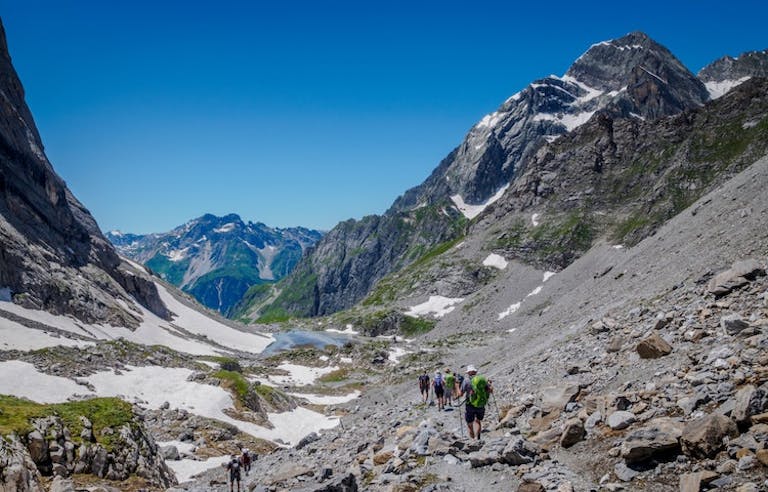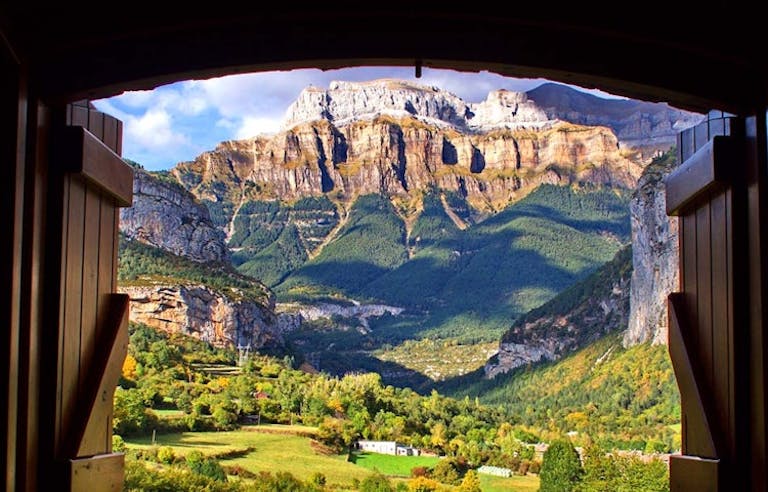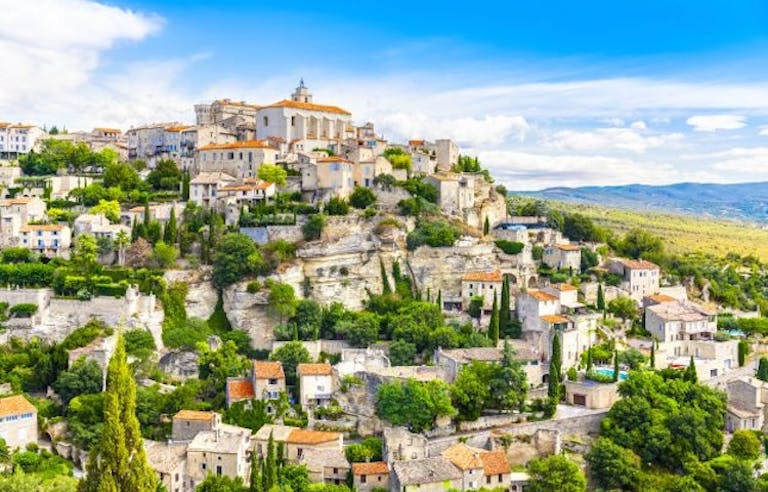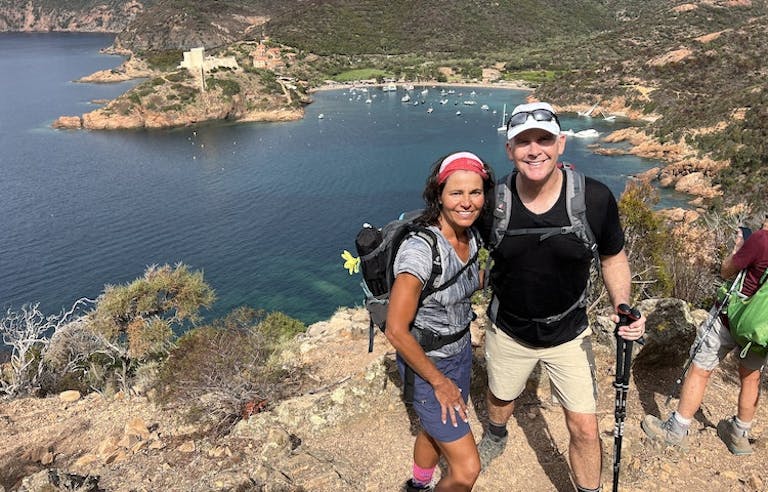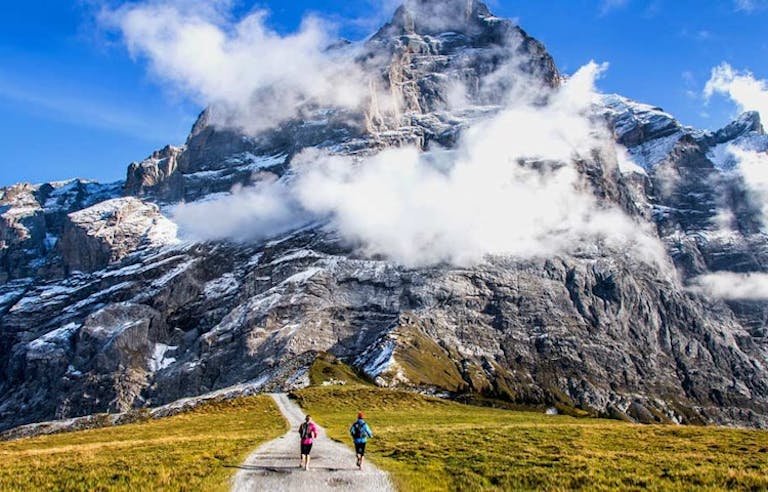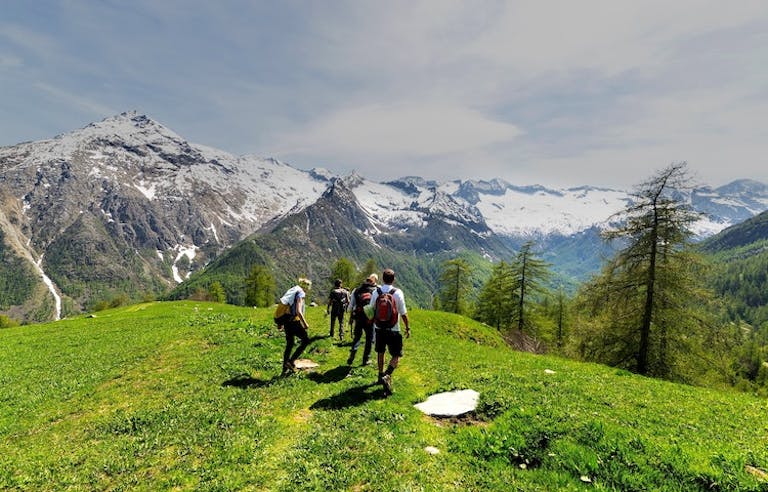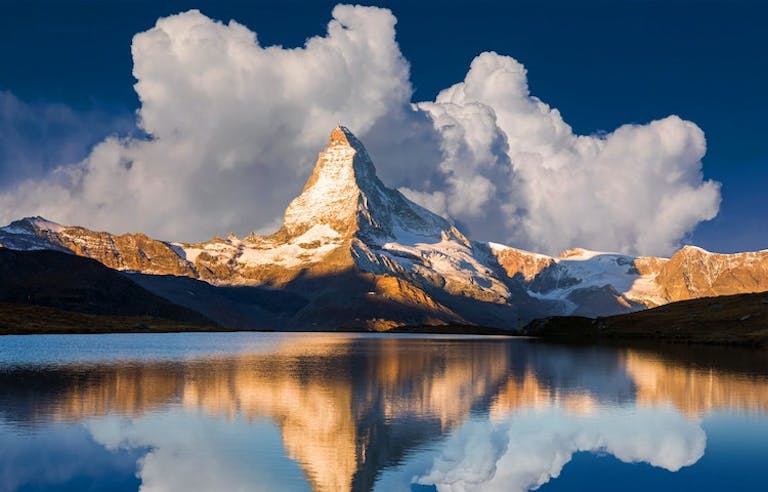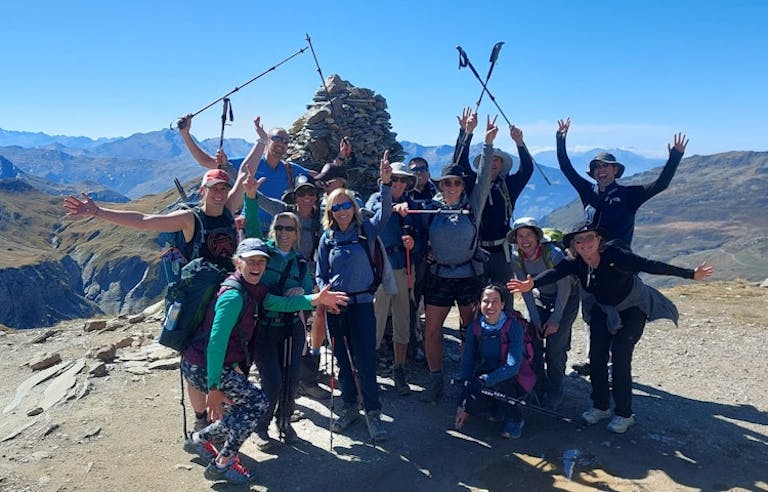Discover France
Welcome to France! From the majestic Alps to the picturesque Pyrenees, France offers a selection of breathtaking trails for hikers of all levels. Pass through charming villages, lush vineyards, and along rugged coastlines. With a culinary scene that celebrates local flavors, hikers can indulge in delicious fare while immersing themselves in stunning terrain. Iconic regions such as Provence’s fragrant lavender fields and Corsica’s undulating coastline beckon.
Planning a trip to France? Read on to find out when to visit, what to do, and much more to make your adventure unforgettable.
What is the best time to visit France?
The weather in France can vary significantly depending on the region. The climate in the north of France is generally cooler and wetter than the south, while the Mediterranean regions of the country tend to be much warmer and drier. Conditions in the mountains can change drastically over the course of the day so travelers should bring layers and be prepared for all types of weather. In general, the best time to visit France is in the spring and fall, when the climate is usually mild and sunny.
What is the best way to get to France?
Trips to the French Alps commonly start in Geneva, Switzerland, the closest international airport to Chamonix, France. Direct flights to Geneva depart from New York and Washington DC, and connecting flights are available from other major US cities. If you are hiking in Corsica, you’ll want to fly into Ajaccio (AJA), which can be reached via either of Paris’ airports, Paris-Charles de Gaulle Airport (CDG) and Paris-Orly Airport (ORY), as well as Geneva, Switzerland (GVA). Finally, if you are headed to Provence, we recommend flying into Paris and taking the high-speed TGV train to Avignon.
How to get around France?
To immerse yourself in the stunning landscapes of France, we highly recommend walking. However, for longer distances, France has an extensive network of airports, train stations, and highways, making it easy to get to any part of the country. For urban exploration, the well-developed public transportation systems, including metros, trams and buses, are reliable ways to navigate cities like Paris, Lyon, and Marseille.
Do I need a visa to visit France?
US citizens do not need a visa for stays up to 90 days. Citizens of other countries should check with their local embassy for entry requirements.
How many days should I spend in France?
The amount of time you need to visit France will depend on what you would like to see and do. The French Alps can be explored in a week or two, as can other popular destinations like Provence and Corsica. If you have the time for a longer trip you can combine locations or get a deeper understanding of local culture and cuisine with a few weeks or even a month.
What are the top 5 places to visit in France?
While the Eiffel Tower and Château de Versailles are popular architectural sights, if you are in search of the top natural highlights of France, you may want to check these out.
2. Lavender Fields of Provence
3. The Gulf of Porto
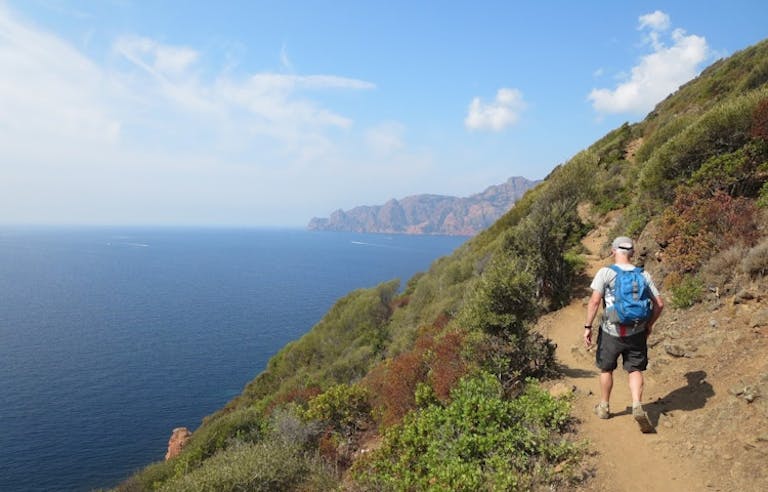
This UNESCO World Heritage Site is renowned for its striking red granite cliffs that rise dramatically from the turquoise waters of the Mediterranean. The Calanques de Piana, a series of deep inlets and towering rock formations, paint an enchanting portrait along the gulf’s coastline.
4. The GR5 Trail
5. Pyrenees
Stretching across the border between France and Spain, the range forms a natural frontier that captivates with its awe-inspiring landscapes and cultural heritage. This diverse ecosystem shelters an array of flora and fauna, while charming villages nestled amidst the mountains tell stories of centuries-old traditions and resilient communities.
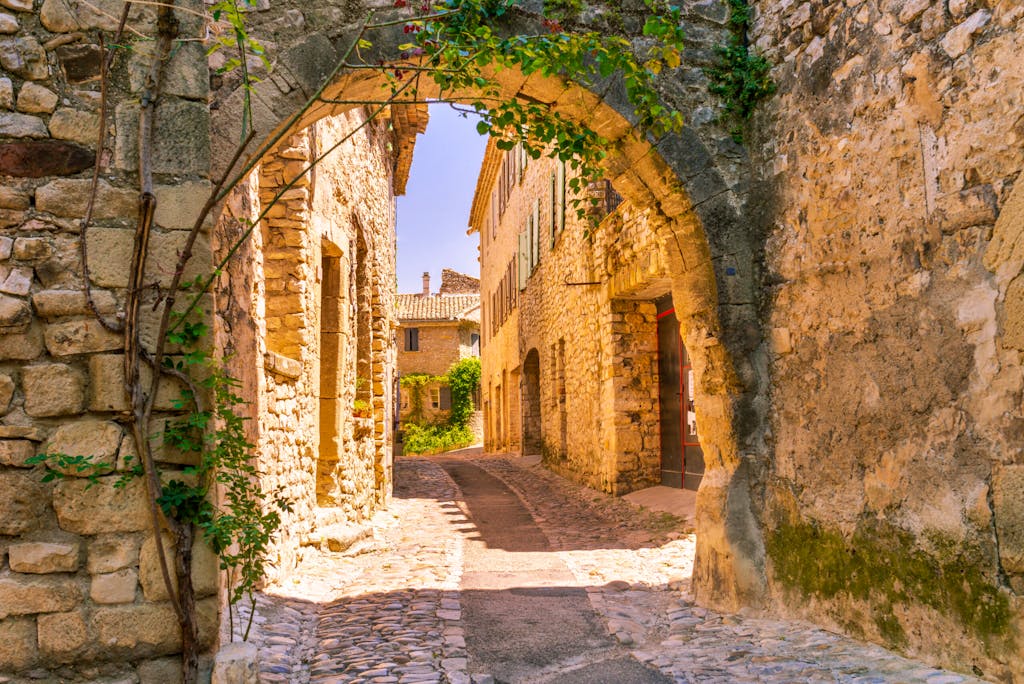
What are the best France adventure tours?
1. France Provence Village to Village Hiking Tour
Provence is celebrated for its clear light and cobblestoned villages, its historic palaces and its abbeys set amid lavender fields. Yet the Provence you discover when exploring on foot is even more magical.
2. France Island of Corsica Hiking Tour
Join an extraordinary hiking adventure to the Mediterranean island of Corsica – a hikers’ paradise. Discover the cliffs and peaks soaring above white-sand beaches, and dazzling vistas from atop those very peaks.
3. Alps Village to Village Hiking Tour
Experience picturesque alpine hamlets and sweeping mountain vistas in Switzerland and France on this unforgettable hiking trilogy of the Alps. Tackle the legendary Eiger Trail at the foot of the Eiger’s notorious north face, which has challenged mountaineers for over a century. Traverse canyon trails to discover imposing views of the iconic Matterhorn, and complete your tour in Chamonix, where the majestic Mont Blanc looms over the charming town.
4. Alps Tour du Mont Blanc Hiking Tour
Mont Blanc. Europe’s highest and most iconic peak. Spectacular. Immense. Dazzling. And undisputedly on every serious hiker’s must-do list. Hiking for 10 days through the heart of the Alps won’t just get your pulse rate up, it will open your eyes to some of the most breathtaking vistas on Earth. Starting in the alpine village of Les Houches, near Chamonix, you’ll hike the full 99 miles around Mont Blanc
5. Alps Chamonix & Zermatt Hiking Tour
Go deep into the heart of the Alps for an epic one-week mountain adventure amidst extraordinary natural beauty. From the hubs of Chamonix and Zermatt, you’ll enjoy perfectly paced day hikes with picture-postcard backdrops.
6. Alps Tour du Mont Blanc Express Hiking Tour
Experience contrasts that surprise and stimulate on this express version of our classic Alps Tour du Mont Blanc hiking adventure. In just 8 days you’ll maximize opportunities for vigorous trekking, breathtaking scenery, and the coziest of Alpine hospitality.
Where are the best places to stay in France?
Accommodations in France vary greatly depending on your budget and where you plan to stay. You can find everything from hostels and budget hotels to luxury resorts and apartments. Many hotels offer amenities such as swimming pools, fitness centers, and on-site restaurants. Airbnb is also a popular option in France, offering a variety of apartments and homes.
1. Hotel de l’Horloge – Avignon
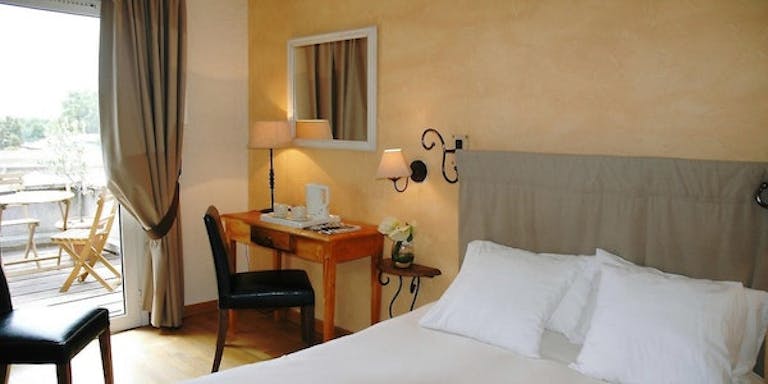
The charming Hotel de l’Horloge is set in a stunning 19th-century stone building, ideally located in Avignon’s historic city center. Its 66 chic rooms are decorated in warm wood tones and exude contemporary Provencal elegance. Enjoy breakfast on the veranda, then step out into the medieval streets and explore the Palais des Papes, Pont Saint Benezet (Avignon Bridge), and many ancient buildings and beautiful townhouses.
2. Grand Hotel des Alpes – Chamonix
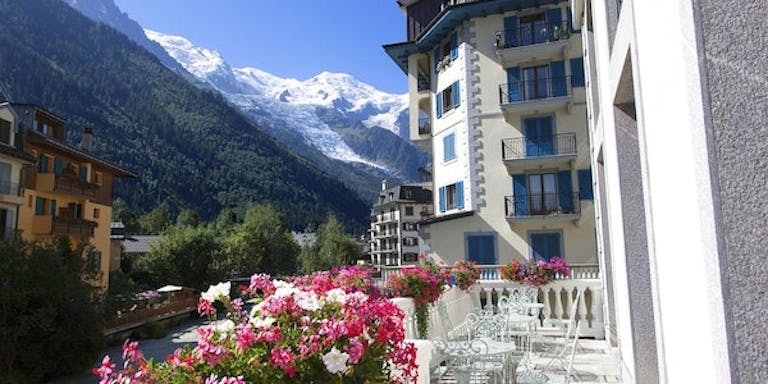
Located in the shadow of Mont Blanc in the heart of Chamonix, the Grand Hotel des Alpes is centrally located, just minutes from the lake, the lift to the Aiguille du Midi, and the old town. The traditional blue shuttered building, built in 1840 but newly renovated, offers 30 handsome rooms with extensive amenities including concierge service and afternoon tea.
3. Hotel Bella Vista – Zermatt
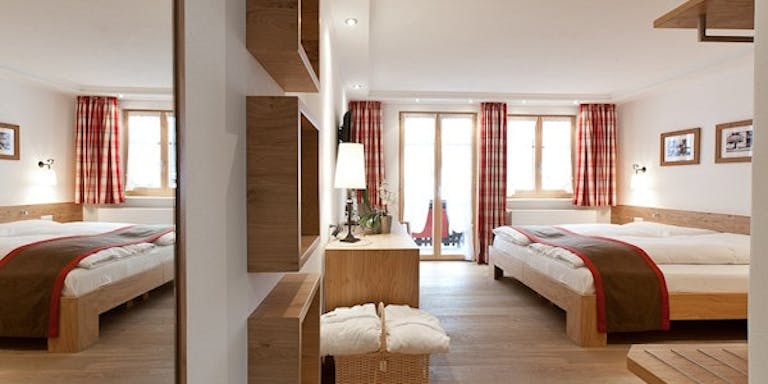
The Hotel Bella Vista is a beautiful family owned and operated accommodation near the Matterhorn. With magnificent views of the Alps, including the Matterhorn, this hotel has a beautiful aura. Travelers can enjoy coveted “Cheese Evenings” and unwind with wine and fondue in the onsite restaurant, which also offers a variety of delicious homemade specialties. The property also boasts an eloquently designed spa, perfect for unwinding after a day of hiking amidst the beautiful alpine scenery. Each room is nicely designed with wood furnishing and comfortable bedding, creating a cozy environment complimented by the very quiet outside surroundings.
4. Cala di Sole – Ajaccio
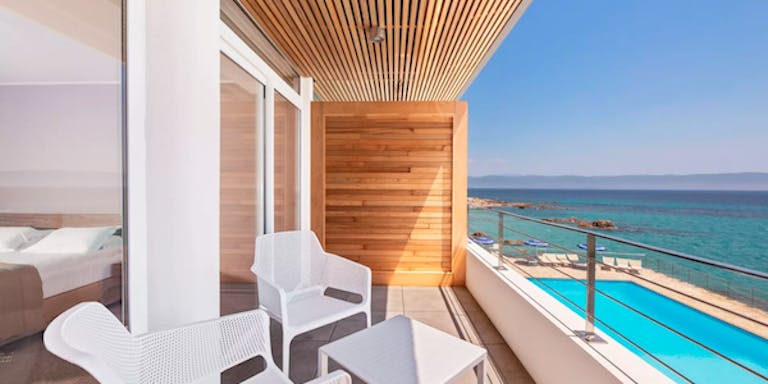
A waterfront hotel with stunning views of the Gulf of Ajaccio, Cala di Sole has its own private white-sand beach, lined with chairs and umbrellas. A swimming pool, tennis courts, bowling green, and gym help guests stay active. This small family-owned property has friendly staff and simply furnished rooms featuring five-star views of the gulf.
Interesting Things to know about France
France is the most visited country in the world, with 89 million tourists in 2019. It is the world’s most successful wine-producing country, with over 400 million cases of wine produced annually. It is home to the world’s fastest train, the TGV, which can reach speeds of up to 320 km/h (200 mph). France is the most popular honeymoon destination in the world, with over 500,000 newlyweds visiting each year and the world’s most popular skiing destination, with over 10 million skiers visiting annually.
What is the language in France?
The official language of France is French (Français). However, due to its diverse population and historical influences, you’ll find a variety of languages spoken in different regions, such as Corsican, Arpitan and Catalan. French is the official language in 29 countries and is the second most commonly spoken native language in the European Union.
What to eat in France?
French cuisine is renowned all over the world for its freshness, flavor and finesse. From classic French dishes like beef bourguignon, coq au vin, steak-frites and ratatouille to regional specialties like crepes and bouillabaisse, there’s something for everyone. If you’re looking for something a little bit different, try a traditional French brasserie, where you can sample traditional French dishes with a modern twist. For a truly unique experience, don’t miss the famous Sunday markets, where you can buy fresh produce and sample local delicacies.
What is the currency in France?
The official currency in France is the Euro (EUR).
You will want to exchange your cash, or withdraw money from an ATM, at the first available opportunity when you arrive in France. Airports generally have good rates and are very convenient. Money can be exchanged in banks and exchange bureaus. Exchange bureaus are open outside banking hours but charge higher commission rates. Banks in France generally close at 4:30pm on weekdays (there may be some variations in closing times), and keep in mind that we generally do not return into town until after closing hours. Amex, Visa and MasterCard are widely accepted in Europe. Bank network systems such as Cirrus and Plus are available along the way. Make sure that your PIN number will work internationally, and let your bank know you will be traveling.
What is the electricity in France?
France is on the 220-240V system. Check the voltage on your personal electronics chargers to determine if you need a voltage converter. There are electric outlets at most accommodation in France, so you can charge your personal electronics every night. France uses Type E outlets. A good resource to see images of plug types is www.power-plugs-sockets.com.
What is the time zone in France?
France is in the Central European Time Zone, which is one hour ahead of Coordinated Universal Time (UTC). They are 6 hours ahead of EST in New York and 9 hours ahead of PST in Los Angeles.
What to wear in France?
For hiking and trekking in France, it’s important to wear layers. Start with a base layer such as a long-sleeved t-shirt or tank top and breathable shorts or leggings. Layer with a mid-layer such as a lightweight fleece or wool sweater, and top it off with a waterproof and windproof jacket. Wear sturdy, waterproof boots or shoes, and bring a hat and sunglasses to protect from the sun. Also, don’t forget to bring along sunscreen and insect repellent.
Sturdy, properly fitting footwear is essential. Medium-weight, waterproof hiking boots with padded ankle, good arch support, and a lug sole traction, which must be suitable for prolonged walking on rocky terrain.
